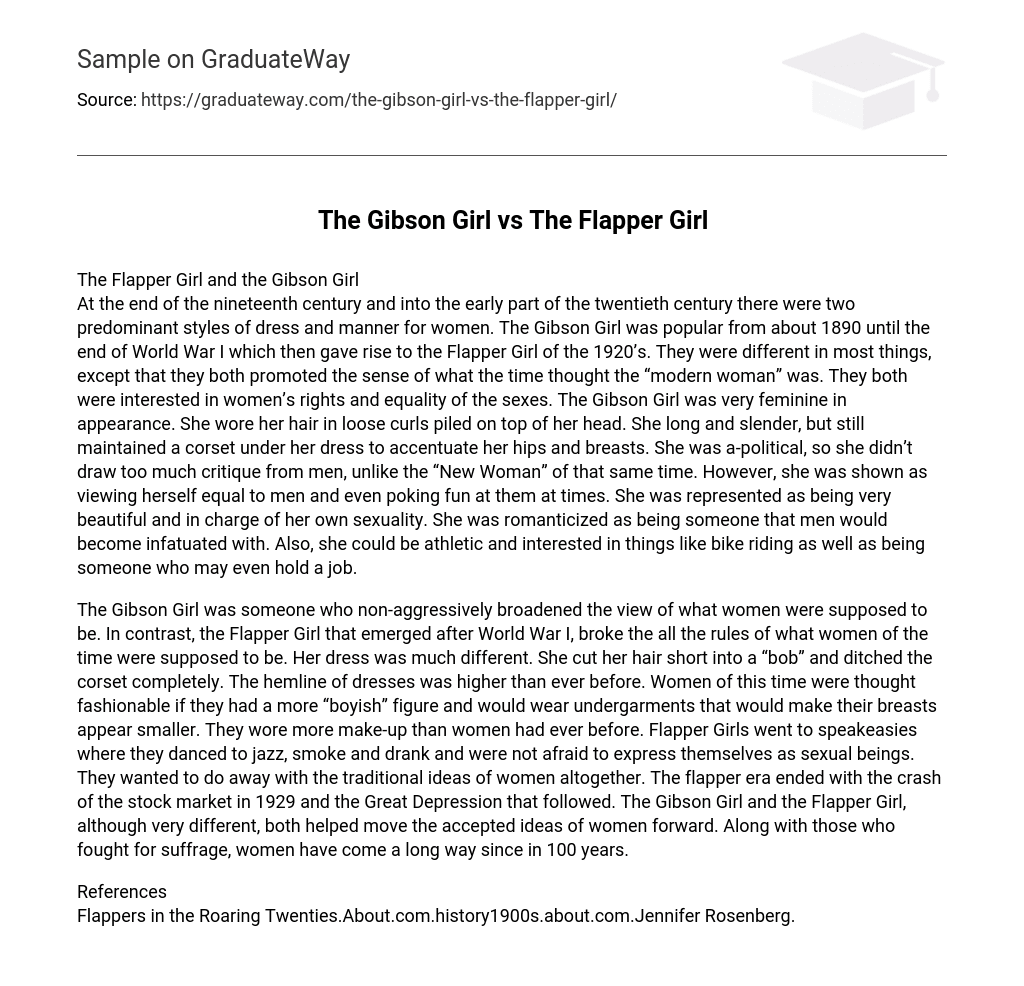At the end of the nineteenth century and into the early part of the twentieth century there were two predominant styles of dress and manner for women. The Gibson Girl was popular from about 1890 until the end of World War I which then gave rise to the Flapper Girl of the 1920’s. They were different in most things, except that they both promoted the sense of what the time thought the “modern woman” was. They both were interested in women’s rights and equality of the sexes.
The Gibson Girl was very feminine in appearance. She wore her hair in loose curls piled on top of her head. She long and slender, but still maintained a corset under her dress to accentuate her hips and breasts. She was a-political, so she didn’t draw too much critique from men, unlike the “New Woman” of that same time. However, she was shown as viewing herself equal to men and even poking fun at them at times. She was represented as being very beautiful and in charge of her own sexuality. She was romanticized as being someone that men would become infatuated with. Also, she could be athletic and interested in things like bike riding as well as being someone who may even hold a job.
The Gibson Girl was someone who non-aggressively broadened the view of what women were supposed to be. In contrast, the Flapper Girl that emerged after World War I, broke the all the rules of what women of the time were supposed to be. Her dress was much different. She cut her hair short into a “bob” and ditched the corset completely. The hemline of dresses was higher than ever before. Women of this time were thought fashionable if they had a more “boyish” figure and would wear undergarments that would make their breasts appear smaller. They wore more make-up than women had ever before.
Flapper Girls went to speakeasies where they danced to jazz, smoke and drank and were not afraid to express themselves as sexual beings. They wanted to do away with the traditional ideas of women altogether. The flapper era ended with the crash of the stock market in 1929 and the Great Depression that followed. The Gibson Girl and the Flapper Girl, although very different, both helped move the accepted ideas of women forward. Along with those who fought for suffrage, women have come a long way since in 100 years.
References
- Flappers in the Roaring Twenties.About.com.history1900s.about.com.Jennifer Rosenberg.





